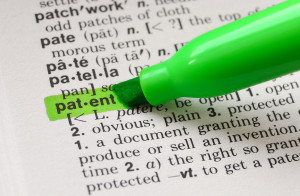
Continuing Patent Applications – What Are They & When Are They Appropriate
© 2002, Dawsey Co., LPA
September 2002
The term “continuing application” is a common term in intellectual property, yet it is often misunderstood and incorrectly applied. This is primarily due to the number of changes in the rules governing continuation practice that have occurred in the past decade.
Most patent applications are filed as “original” applications. In other words, they establish their own filing date and do not have an effective filing date based upon another previously filed application. If an “original” application is then used to establish an effective filing date of a later filed application, it becomes known as a parent application. Such later filed applications may take many forms.
Continuation Applications
First, and perhaps the most straight-forward continuing application, is a continuation application. Continuation applications utilize the parent application’s disclosure and claim the benefit of the parent application. In order for a continuation application to be granted the filing date of the parent application it must: (1) be filed while the parent application is pending, (2) have at least one inventor in common with the parent application, and (3) have claims that are fully supported by the parent application’s disclosure. The term “pending” in requirement (1) above is the cause of great confusion and deserves special attention. The term “pending” does not mean that the “original” application must still be pending. It simply requires that any application in the parent application and continuation application relationship is still pending.
Divisional Applications
A divisional application is a second type of continuing application and is a specific type of continuation application. The Patent Office commonly finds that an application impermissibly claims more than one invention. Upon this finding, the Patent Office issues a Restriction Requirement that requires the applicant to choose one of the disclosed inventions for prosecution and to remove the claims directed to the other invention. The applicant may then file a divisional application at any time during which the parent application is pending wherein the claims that were removed from the original application are resubmitted.
Continuation-In-Part (CIP) Applications
The third available continuing application, known as a CIP application, contains the parent application’s disclosure PLUS additional disclosure. Claims that are supported by the parent application’s disclosure may obtain an effective filing date of the parent application, however claims that are supported by the additional disclosure may not obtain the effective filing date.
Continuing Prosecution Applications (CPA’s) & Requests for Continued Examination (RCE’s)
In addition to the three types of continuing applications previously described, there is a second mechanism available for filing continuing applications that is known as the CPA. The CPA is currently not of much significance because it is being phased out and may not be used with applications, other than design patent applications, that were filed after May 28, 2000. The RCE is the replacement for the CPA. The RCE may be used with any application filed on or after June 8, 1995, except design patent applications. The purpose of both the CPA and RCE applications is to allow an applicant to file an application to keep the prosecution of a parent application alive after it has received a final rejection from the Patent Office. These applications stay with the same Examiner that was reviewing the parent application and keep the same serial number, yet the final rejection of the parent application is removed. CPA’s and RCE’s can be thought of as simply paying an additional fee to buy another full examination of an application.
So What Is The Benefit?
Continuation practice is all about strategy, a strategy that should be developed in close cooperation between the applicant and their patent attorney. In developing a strategy for a family of related inventions, one must consider the advantages and disadvantages of obtaining an earlier effective filing date. Ask yourself, what am I gaining by filing a continuing application rather than an original application?
In answering this question, it is necessary to keep in mind that a patent term is 20 years from the filing date of the earliest filed parent application. Therefore, filing a continuing application, rather than an original application, has the potential to reduce the life of a subsequently issued patent. However, a continuing application may need the effective filing date of the parent application to overcome recent prior art or other statutory bars.
Another consideration is the potential risk of others designing around your patent. If this is a substantial risk, it may be worth using continuation applications to ensure the disclosure of the original application is always pending. The benefit is that if a competing product has designed around the original patent, the claims of the pending continuation application may be modified so as to ensure infringement if a patent should issue. Of course, the modified claims must be supported by the disclosure.
A further consideration is that of commercialization. Patent applications are typically written as broadly as possible and for this reason are met with resistance in the Patent Office. The Patent Office will often allow the narrow claims of an application while rejecting the broader claims. When an applicant has a particular product with immediate commercial potential, it may be wise to delete the broad claims during prosecution to obtain a patent on the narrow claims covering the specific product. The broader claims can be filed in a separate continuation application, with the commercial product being protected in the meantime.
Each of the applications described herein has unique procedural requirements and deadlines that are beyond the scope of the present article and should be discussed with a patent attorney.
